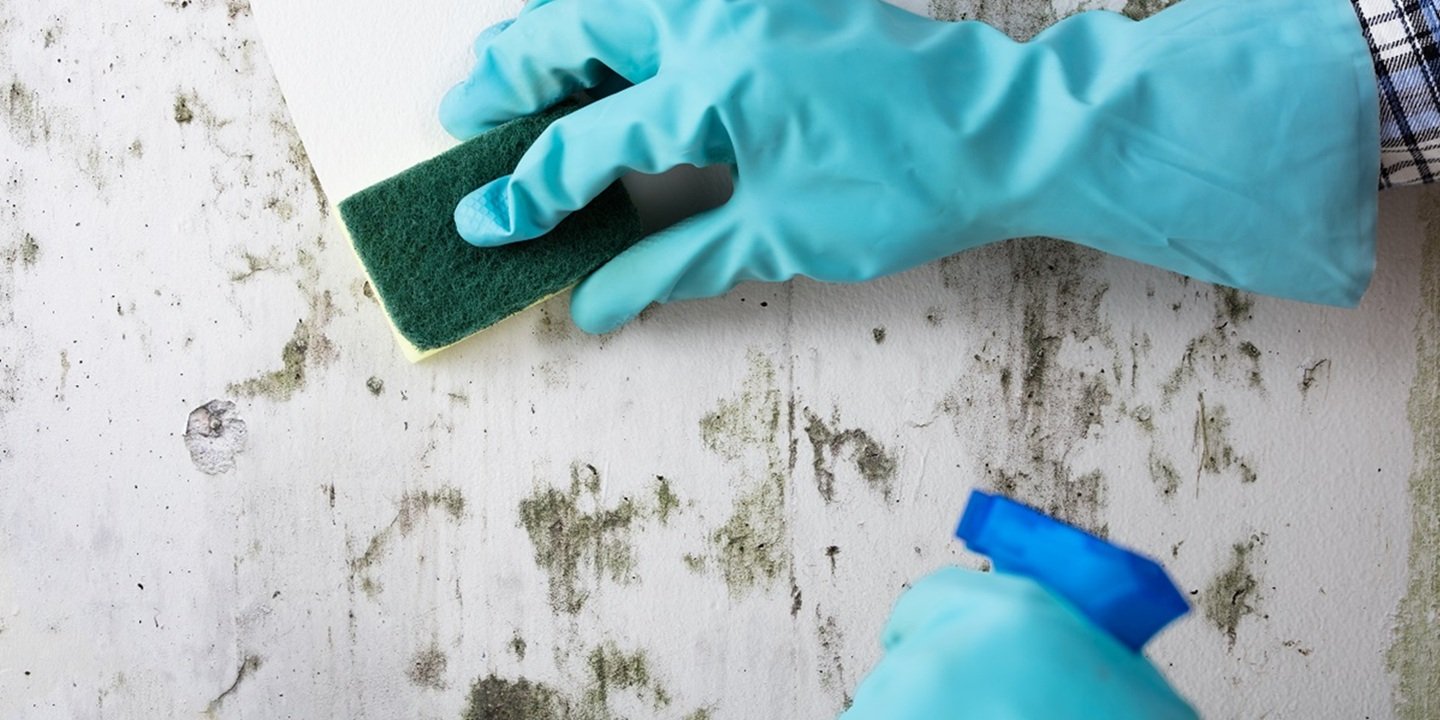How to prevent mold damage when water enters the building
Climate and EnergyArticleJuly 21, 2025
Life-threatening winds and devastating floods are understandably the most obvious threats from hurricanes and tropical storms. But after the storm passes, the insidious risk of mold and bacteria after water enters a building can represent a major threat to recovery operations.
Whatever the strength of a tropical storm or hurricane — or, in fact, any event that causes rainwater to enter your property — flooding and water damage can result, particularly in low-lying areas. And when floodwaters meet summer heat, mold may develop. The longer water sits, and the more moisture is exposed to heat, the more fertile the breeding ground is for mold, which can aggravate asthma or other respiratory issues in addition to damaging property. Those with weakened immune systems are vulnerable to invasive mold infections after hurricanes or floods, notes the Centers for Disease and Prevention (CDC).
While controlling and mitigating mold damage is relatively straightforward, the rapid growth of mold after floodwaters seep into a property can create tremendous setbacks to storm recovery. If interiors remain wet for as little as 48 hours, mold can begin forming, particularly in porous materials such as ceiling tiles. What started as a cleanup job can escalate, with the possible need for removing and replacing drywall, carpeting, cabinetry and flooring, which can prolong business interruption or force residents to move out of their homes.
Costs can quickly spiral, and project timelines stretch, particularly if contractors are in high demand in the area. Many businesses and residents in the paths of past hurricanes learned this the hard way.
One challenge to stopping the spread of mold is that even for businesses and residents who are well informed and well equipped to start flood cleanup after a major storm, conditions such as power outages, road closures and safety concerns (e.g., downed powerlines) can cause delays. If evacuations were ordered, no one should return to a flooded property until local authorities have declared it safe to do so.
But you don’t have to wait for the all-clear to begin making progress.
Book mitigation services
Owners of larger properties and/or those impacted by unclean water or sewage should book an appointment with a mitigation services provider or restoration contractor as soon as possible to assess needs. Insurance providers that specialize in property coverages sometimes have professional service agreements in place with mitigation companies and can offer referrals.
Zurich’s agreements with its preferred vendors require the service provider to contact the customer within minutes of receiving the referral and to inspect the property within hours under normal circumstances. And claims professionals will offer those contacts when customers call to file a claim, which they should do as soon as they can, even if they don’t know the full extent of the damage. Good claims professionals can help get the ball rolling in the right direction.
Round up fans and dehumidifiers
Smaller businesses or residents affected by flooding can gather tools and supplies such as electric fans, portable dehumidifiers and water vacuums to dry out smaller areas once it’s safe to begin using them as directed (i.e., utilities are safe to operate and there is no standing water). A generator may be useful if power outages are occurring. With all these appliances, be aware of safety precautions and heed instruction manuals. Also, note that for these appliances to be useable, they need to be dry, so store them where they’re less likely to be touched by floodwaters.
Snap photos before cleanup
When you’re cleared to be on the property, snap photos of conditions before you begin removing wet items and water to help with insurance claims reporting. See if you can observe where and how water entered the property for possible retrofits during cleanup.
Once water has drained, disinfectants such as bleach with water (never mix bleach with ammonia) can be used to clean surfaces. Dry them thoroughly afterward. Make sure areas are well-ventilated and, if your HVAC is functional, blast the air conditioning to help reduce humidity and prevent mold. The CDC emphasizes why HVAC systems must be approved for use by certified professionals: If these systems were flooded with water, turning them on prematurely will spread mold throughout the property.
Whether you book mold remediation services or do it yourself, put safety first while acting as quickly as possible to remove wet items and dry the area out. Anyone undertaking this work on their own should refer to guidelines from the CDC and Environmental Protection Agency. Among the CDC’s tips: Wear proper personal protective equipment for this task and open windows and doors for ventilation. Also, bring plenty of bottled water to stay hydrated.
As you think ahead, keep in mind possible ways to build back better with materials such as mold- and moisture-resistant drywall.
The best time to prepare for severe weather events is before they happen. This is just part of a fully developed hurricane Emergency Response Plan (ERP). Find more information on Zurich’s Hurricane Resource Hub and Flood Resource Hub.
